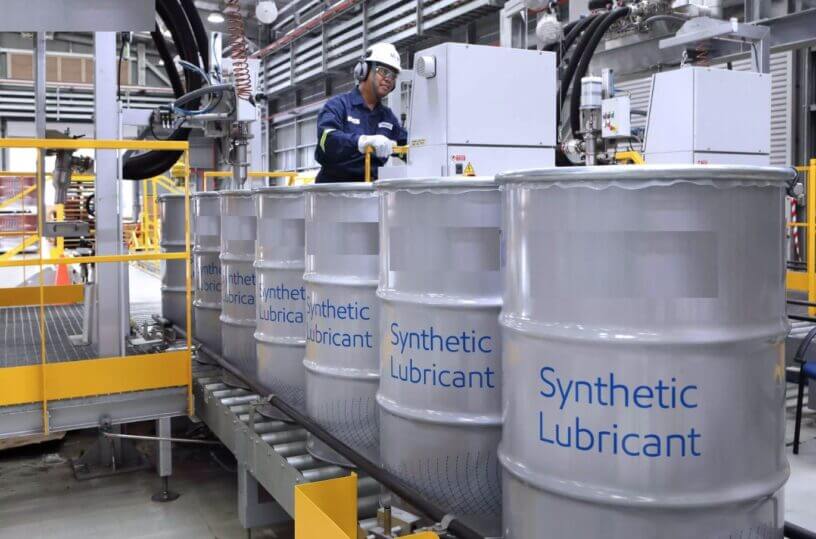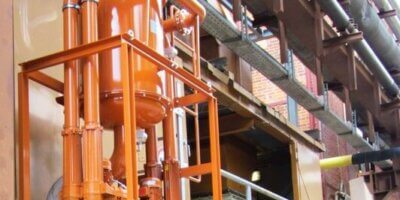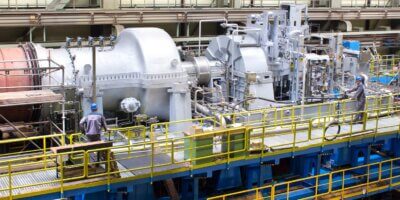What is lube oil
Lube oil, also referred to as Lubricant oil, is a class of oil that is used to reduce friction, heat, and wear between mechanical components that are in contact with each other.
Characteristics of lube oil
- Long life without the need for changeout.
- Prevention of acidity, sludge, and deposit formation.1
- Excellent protection against rust and corrosion, even during the shutdown.
- Good demulsibility2 to shed water that enters the lubrication system.
- Easy filterability without additive depletion.
- Good foam control.
How the lube oil is formulated
Lube oil consists of approx. 90% base oil and 10% additives to enhance their performance characteristics. The base oil is responsible for the typical properties of oil as given below
• Viscosity and Viscosity index3• Pour point• Flash point• compatibilities• Volatility
The additives, however, determine its actual performance by influencing the base oil’s
• oxidation stability• anticorrosion properties• wear protection• emergency lubrication properties• wetting behavior• emulsibility• stick-slip behavior• viscosity-temperature behavior.
Before we delve into these two categories of lube oil , we should know about the base oil categories. The American petroleum institute (API) has categorized base oil into 5 categories (API 1509, Appendix E).
Base oil categories as per API

The first three groups are refined from petroleum crude oil. Group I is derived from the solvent refining process, Group II from the hydrotreating process, and group III from the hydrocracking process, Group IV base oils are full synthetic (polyalphaolefin) oils and Group V is for all other base oils not included in Groups I through IV. Lubricating oils begin as one or more of these five API groups and then the performance-enhancing additives are added to the mixture.
Below are a short description of the processes that are used to produce the base oils
Solvent refining process
Initially, crude oil is separated into petroleum products through distillation (fractionation). But this process separates petroleum products into groups only by their boiling point and some impurities like aromatics4 and undesirable constituents may remain. Solvent refining processes including solvent extraction and solvent dewaxing, usually remove these undesirables at intermediate refining stages or just before sending the product to storage. The most widely used extraction solvents are phenol, furfural, and cresylic acid. For more info click here
Hydrotreating process of crude oil
Crude oil hydrotreating is one of the powerful techniques for upgrading heavy oils. Crude oil hydrotreating is a catalytic process that uses hydrogen at high reaction temperatures and pressures with a high activity catalyst to remove contaminants such as sulfur (S), nitrogen (N), metal (M) and saturate aromatic and olefinic compounds.
Hydrocracking process of crude oil
Catalytic cracking of heavy hydrocarbons in the presence of hydrogen is known as hydrocracking. In part, it is a combination of fluid catalytic cracking and hydrotreating process. The hydrocracking process converts heavy, high-boiling petroleum feedstock into lighter products (naphtha, kerosene, diesel, etc.) or high-quality lubricating oils. The hydrocracking process breaks the C-C bonds along with the hydrogen saturation of heavy feedstock in the presence of a catalyst under high hydrogen partial pressure and at severe operating conditions.
Synthesizing to manufacture Polyalphaolefin (PAO)
Crude oil or natural gas is processed through cracking to produce ethylene which is used as a feed stock. Polyalphaolefin (PAO) is manufactured through a synthetic chemical process that originates from ethylene. The first step is the synthesis of oligomers (polymers with few repeating monomer units) from the linear alpha-olefin. The second step is the hydrogenation of the remaining double bonds (unsaturation) in the oligomer and subsequent distillation to separate the unreacted monomer and light-viscosity grade PAO.
Now that we have basic information about the base oils , lets look at the types of lube oil commonly used
Type of lube oil:
There are mainly two types of lube oil that are generally used in turbomachinery.
- Mineral lube oil
- Synthetic lube oil
Mineral lube oil

Mineral lubricants use group I and/or group II and/or group III base oils which are obtained as a secondary product in the process of refining crude oil into petroleum products such as petrol and diesel. The base oil does not have to go through any additional refining process. This results in a cheaper final lubricant, but the oils contain more impurities and the molecules differ more in size and shape than Synthetic lube oil. Mineral lube oil can offer stability, longevity, and lubrication even at high temperatures. They are used widely throughout industries.
Synthetic lube oil

Synthetic lube oils are made from high-quality group III or group IV or group V base oils which have a distillation process that takes place to refine the oil and eliminate aromatics4 while increasing saturation. These are expensive compared to mineral lube oil, contain fewer impurities, and are used in high-performing engines. There are multiple types of synthetics with distinctly different properties and applications e.g synthesized hydrocarbons (polyalphaolefin, or PAO), organic esters (such as diesters and polyol-esters), polyglycols, polyalkylene glycol (PAG), phosphate esters and silicone lubricants. However, most synthetics used are of type polyalphaolefins (PAO). in synthetic lube oil molecules are uniform in size, this creates less friction in the engine and allows the oil to move throughout the engine smoothly resulting in better performance.
Differences between synthetic and mineral lube oil
| Synthetic lube oil | Mineral lube oil |
| No frequent need for oil changes | frequent oil changes required |
| sludge left by synthetic oils is less | contain some contaminants which form sludge |
| Stable viscosity, even at high temperatures | loss of viscosity under extreme conditions |
| Less volatile | More volatile |
| High Viscosity index | Low viscosity index |
| Excellent flow at low and high temperatures | Flow at low temperature is limited |
lube oil for compressors lubrication
Most centrifugal compressors are lubricated with high-quality ISO 32 turbine oil/ Mineral oil. Some compressors may call for an ISO 46. If a step-up gear is present and lubricated with the same oil as the bearings, ISO 68 turbine oil may be recommended.
In reciprocating compressors, both the cylinder and crankcase lubrication systems are commonly lubricated by mineral oils from the viscosity range ISO VG 68 to ISO VG 220 containing Corrosion inhibitors, anti-oxidants, and anti-wear additives. Higher viscosity indexes are used for higher temperatures. For some applications, synthetic lubricants of equivalent viscosity indexes are recommended.
lube oil for gas turbine lubrication
In heavy-duty gas turbines, components are massive and bearings are located at some distance from the heat source. Usually, petroleum-based lubricants perform satisfactorily for these gas turbines.
In lightweight aero-derivative gas turbines, the gas turbines are quite compact with bearing near the heat source. Extreme operating conditions of aero-derivative gas turbines usually require a high-quality synthetic-base-oil.
1In the production of lubricants, additives are added to the base oils for improving properties like wear and tear, which are usually a little “acidic”. However, negative effects occur when the proportion of acids in the oil increases. There are several reasons for this:
The acid load of engine oils increases during their use due to combustion products. “Blow-by” gases enter the oil circuit. Sulfur, which stems from the fuel, adds further acidity to the oil. They all must be neutralized and rendered harmless by the engine oils.
lubricants also become acidic through oxidation. To neutralize used oils, more caustic potash solution is consumed in the laboratory if the oil has been aged by reaction with air-oxygen over long periods of use or by high temperature. During oil aging, the typical hydrocarbon chains become “acidic” due to the accumulation of oxygen.
2Demulsibility is the ability of the oil to separate from water.
3The viscosity index (VI) is an arbitrary, unitless measure of a fluid’s change in viscosity relative to temperature change. It is mostly used to characterize the viscosity-temperature behavior of lubricating oils. The lower the VI, the more the viscosity is affected by changes in temperature, the higher the VI, the more stable the viscosity remains over temperature fluctuations.
4Aromatic hydrocarbons are an important series of hydrocarbons found in almost every petroleum mixture from any part of the world. Aromatics are cyclic but unsaturated hydrocarbons with alternating double bonds. The simplest aromatic hydrocarbon is benzene (C6H6). The name “aromatic” refers to the fact that such hydrocarbons are commonly fragrant compounds.
References:
https://www.machinerylubrication.com/Read/29113/base-oil-groups




Leave a Reply